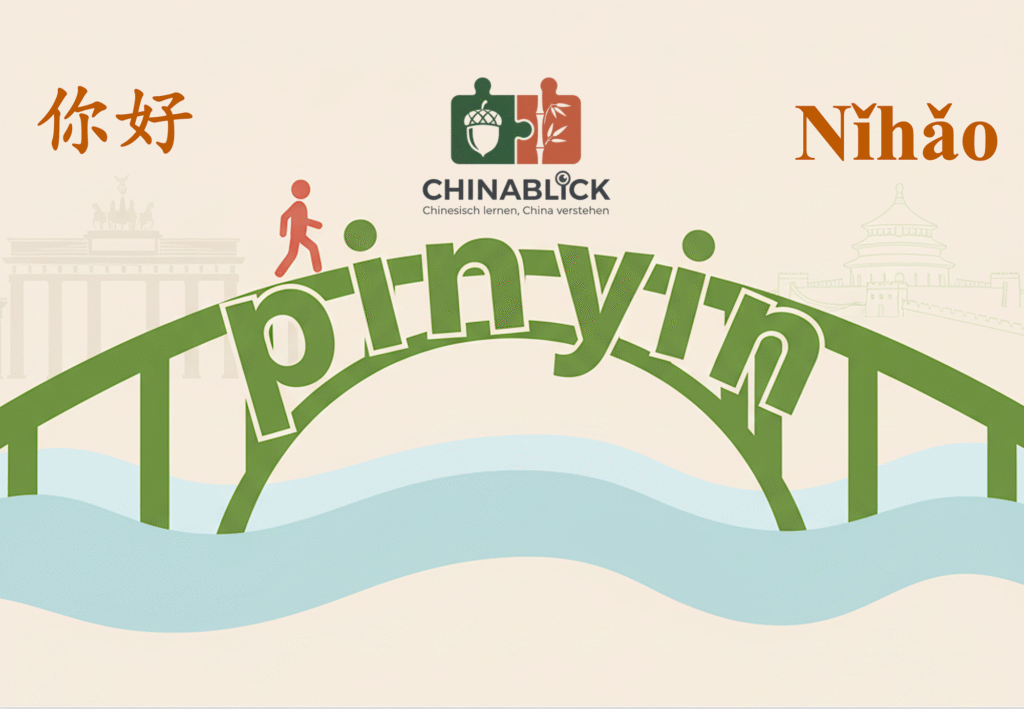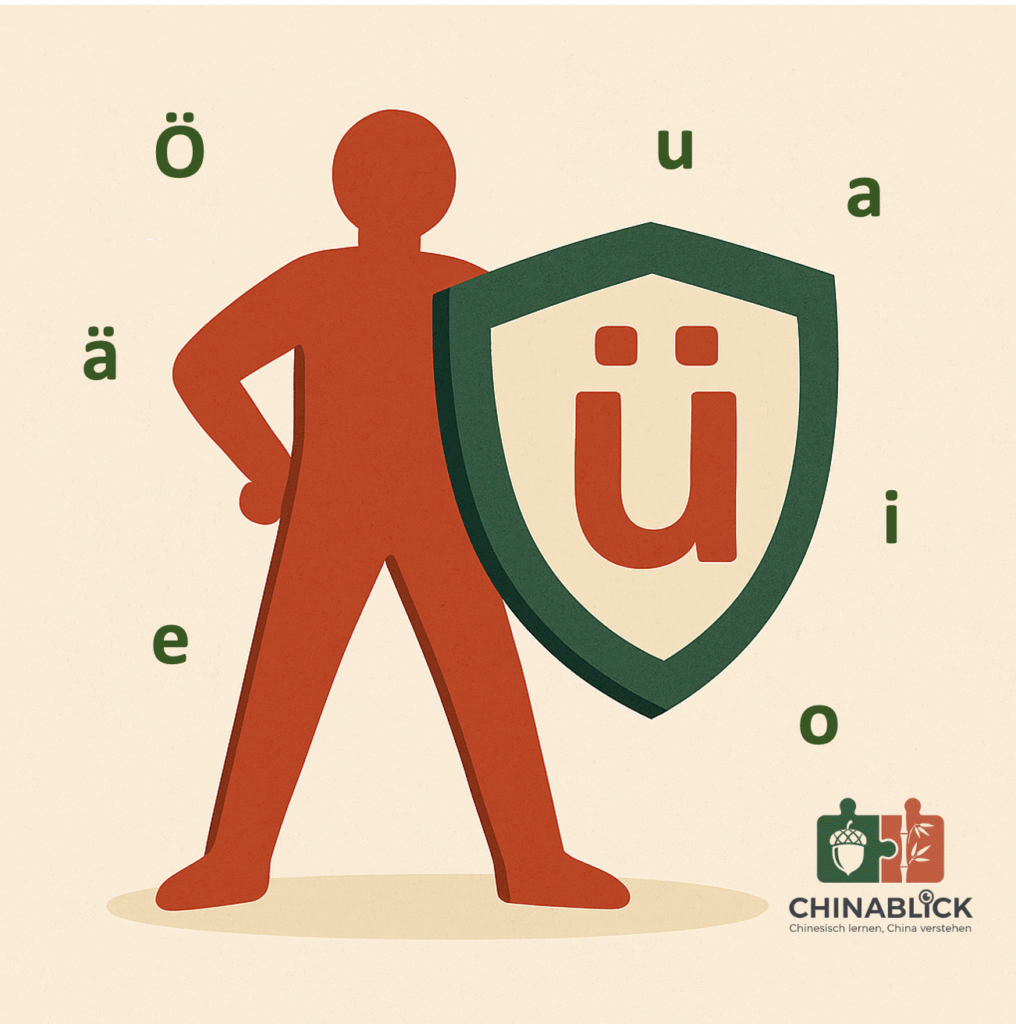Picture this: you hop on the subway in Beijing and spot “Dongzhimen” on the sign. Or you type ni hao on your phone and “你好” pops up. What is that? It’s not English, and it’s not German either. It’s a tool that helps you read and write Chinese: Pinyin.
Pinyin is a system that writes Chinese sounds with the Latin alphabet. Not a new language—more like a bridge:
- Reading: you can sound out characters even if you can’t write them yet.
- Typing: type Pinyin and get thousands of characters.
- Speaking: it’s your entry point to pronunciation.

Pinyin & German: familiar yet surprising
If you speak German, lots of sounds feel familiar right away: m, n, p, t, k … almost the same.
And then there are a few that feel new:
- ch ≈ German “tsch”. For example, chī sounds like “tschi.”
- x ≈ the ich sound—soft and made toward the front of the mouth.
- zh ≈ “dsch.”
- ü = German ü (as in grün). This is your built-in advantage!

Why Pinyin matters
Many learners say Pinyin gives them their first win. You can read out loud right away, recognize place names, and write “你好.” Pinyin isn’t just theory—it’s something you can use immediately.
Mini tip: the “ü” superpower
“ü” trips up lots of people. Not you. You already know it from für, Müll. Just watch three things:
- When typing on the keyboard (cell phone, computer), ü is often written as v: nǚ → nv, lǜ → lv.
- Don’t mix up u and ü. They’re different words:
- lù 路 = “street/road”
- lǜ 绿 = “green”
- After j, q, x, y, Pinyin writes u but it’s pronounced like ü: ju, qu, xu, yu = jü, qü, xü, yü.
What’s next?
Pinyin is just the start. Next up:
Why does ma have four tones—and four meanings? And why do q and x look familiar but sound different?
In this series you’ll hear two voices:
👩🏫 Teacher’s view: a long-time Chinese teacher in Germany sharing clear rules, common pitfalls, and classroom-tested drills.
👩🎓 Learner’s view: a German learner who made it—sharing real hacks: what worked, where she stumbled, and how she fixed it.
Our goal: Pinyin shouldn’t just be “rules.” It should be a skill you can use right away.
Stick around—step by step, we’ll open the door to Chinese pronunciation.
